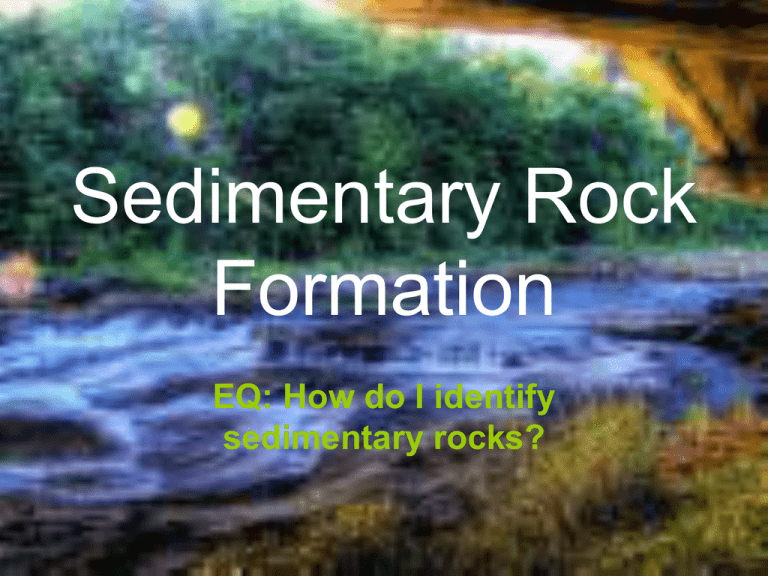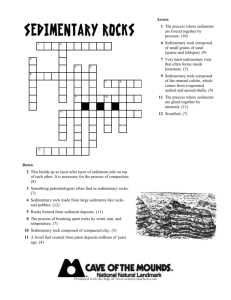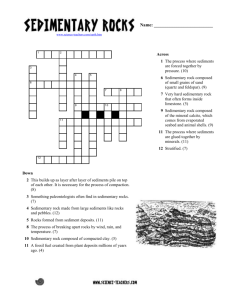Sedimentary Rock Formation
advertisement

Sedimentary Rock Formation EQ: How do I identify sedimentary rocks? SEDIMENTARY ROCKS • Sedimentary rocks are formed when sediments that have been weathered, eroded and then deposited become compacted and cemented together. • Vocabulary Help 1. sediments-small, solid pieces of material that come from rocks or living things. 2. weathering-wearing away or breaking down into smaller and smaller pieces 3. erosion-moving, transporting, or carrying away sediments to another place (caused mostly by wind, water, or ice) 4. deposition-place of settling 5. compaction-pressing or pushing down (caused by pressure from layers of sediments above and the weight of the water) 6. cementation-stick together and harden • Sedimentary Rock Simulation Compaction Cementation (Crystallization) Common Characteristics • most are found on the exposed surface of Earth • stratification - visible layers with oldest layer usually found on bottom • may contain fossils • Many form underwater • May have ripple marks TYPES OF SEDIMENTARY ROCKS 1. Detrital -forms from broken fragments of other rocks -grouped by size of particles Examples of Detrital Sedimentary Rocks • Conglomerate-large rounded sediments • Breccia-large sharp or jagged sediments Examples of Detrital Sedimentary Rocks • Sandstone-sand size particles • Siltstone-silt sized particles • Shale-tiny particles of clay or mud Found in the Real World • Sandstone TYPES OF SEDIMENTARY ROCKS 2. Chemical -forms from dissolved minerals that crystallize -sea or lake water evaporates leaving minerals behind that crystallize together -ex. limestone rock salt TYPES OF SEDIMENTARY ROCKS 3. Organic -forms from the remains of once-living things -often contains fossils Examples of Organic Sedimentary Rocks • coquina-rock completely made of shell fragments • chalk-made of microscopic shells • coal (used for energy)forms when pieces of dead plants are buried under other sediments in swamps over a period of millions of years And the rock cycle continues… • Sedimentary rock an be uplifted and exposed to the surface-possibly as parts of mountains only to be worn away again by weathering and erosion







